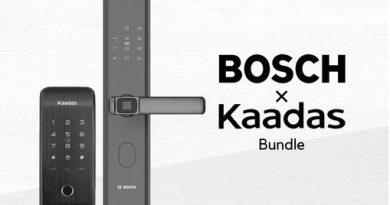Ideas to make your website more engaging
Since Tim Berners-Lee published the world’s first web page way back in August 1991, the internet has grown and matured to become the greatest informational resource in the history of man. The web now influences almost every aspect of our daily lives – everything from how we search for and consume media to how we shop and interact with one another. Not bad for a platform that hasn’t even turned 30 yet.
Standing out from the crowd is now harder than ever
However, if you run a website (either in a personal or professional capacity), you will have no doubt found yourself facing the perennial problem faced by most web admins –how do you attract more visitors and, as importantly, how can you keep users on your site?
There are now more web pages than people in the world, so enticing users to your site and engaging them is harder than ever before. Like so many others, if you struggle to find ways to generate more traffic and keep users glued to your content, below are a few ideas you could try.
Before you start, determine the point of your site – and plan it appropriately
No two websites are the same, and the aims of each web production will vary massively from site to site. Before you even start building your first page, you should identify what you hope to achieve from the build and stick closely to a format that suits you.
For example, if you’re building an e-commerce site, your primary aim will be selling products, so you should display your goods clearly and concisely, putting them front and center. Conversely, if you’re producing a mostly-showcase site (common among service companies or higher-value businesses), then you’ll likely want to focus more on the skills your firm can provide, your company history, previous case studies, product datasheets, etc.
A job’s goal should dictate every other aspect of the production – from the design to the style of wording, layout, and photography you use. This should be the starting point for everything else to avoid you losing focus and diluting your message.
If you’re in any doubt about how best to proceed, you should enlist the help of a professional design company that will be able to advise on the various different types of website and directions you can take.
Design is key – first impressions do count
Perhaps more than in any other area of life, first impressions count online. Research has shown visitors will leave a site if they don’t find what they’re looking for quickly. While opinions vary hugely (some experts suggest you have just three seconds to gain the attention of a user, others claim closer 15), we all know how easy it is to simply click ‘back’ to a myriad of other search results.
If you’re to gain your visitors’ attention, your pages need to make an immediate impact. Web users tend to skim-read pages, searching for key phrases, text, or images relating to what they searched for originally (unless they already know your website). Consequently, it’s of utmost importance you keep your design clean, clear, and easy to understand.
As a rule, try to think of your site from a user perspective and prioritize your most engaging, relevant, and interesting content to the top of pages (sometimes also known as ‘above the fold‘). You should also remember visitors may not necessarily enter your site via the home page – so ensure you carry a clean design style and prominent navigation throughout all your pages.
Make it easy for users to navigate your pages by thinking in hierarchies
In line with the above, it’s quite likely visitors will enter your site via pages further down the hierarchical structure, so you must ensure you feature a clear and easy-to-understand navigational menu. Many web admins find it difficult to envisage how their site is organized but drawing a layer-based hierarchy (rather like a family tree) can help you identify exactly how your site works. Indeed, planning your site in layers will also help you prioritize content so you can provide users with a logical, branching menu structure.
Use video and interactive tools to engage your users
Video has been proven to be far the most engaging media format online – way ahead of text and images – but there are many other interactive tools you can use to involve your users and keep them coming back for more.
Interactive chat systems like JivoChat have proven use cases that show improved user engagement when deployed on a site, encouraging visitors to ask questions and engage positively with a brand.
Also, don’t forget other tools like animations, interactive games, or infographics, all of which can be used to project your message and embolden your brand.
Content is King but keep it simple – less is very often more
Screeds of text are off-putting to users – at least until you’ve sufficiently attracted their attention and hooked them in. Regardless, you should avoid using overly-ornate, lengthy or confusing text as it will only serve to alienate your audience.
Rather, think about the key points you’re trying to make and organize them into headers and paragraphs. Your pages will become considerably better organized and easier-to-read – plus your users will gain a quicker idea of what you’re trying to say. Moreover, search engines will also understand your content and rate you higher.
Remember the importance of Search Engine Optimization (SEO)
In truth, you can have the greatest-looking, best-informed website and content but, if you’re not getting users to your pages, your site won’t be performing a valuable function. Google now accounts for over 92% of all searches, so having your site feature in the engine’s Search Engine Result Pages (SERPs) is vital if you’re to attract new visitors.
Search Engine Optimization (SEO) is a highly detailed process involving the online promotion of a website to improve its position within search results. While there are many aspects of SEO you might be able to handle yourself, if you’re to see the best results, you should consider outsourcing to a professional online marketing company.
Industry experts now suggest around 71% of all consumer journeys start with a search so, if you’re running any kind of commercially-oriented website (whether that be an e-commerce-enabled site or simply brochure pages), being found in search engines should be an integral part of your sales and marketing strategy.



